Nasa’s Europa Clipper launches for Jupiter’s icy moon in search for life
NASA has launched its first spacecraft to Jupiter’s moon Europa in a mission to search for life outside earth. See the video.
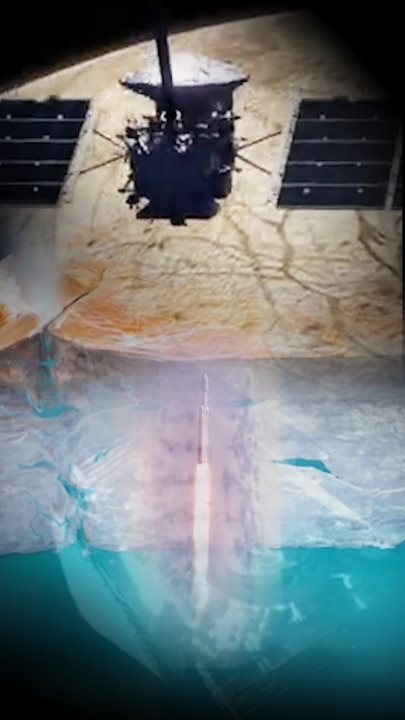
United States
Don't miss out on the headlines from United States. Followed categories will be added to My News.
A spacecraft on a mission to search for signs of life on one of Jupiter’s icy moons has successfully launched from Cape Canaveral, Florida.
NASA initiated the launch at 12.06om local time after Hurricane Milton forced the mission to be postponed last week.
The Europa Clipper will embark on a journey of 2.8 billion km to reach Europa, a mysterious moon orbiting Jupiter.
And although it won’t arrive until 2030, it will serve as NASA’s first spacecraft dedicated to studying an ice-covered ocean world in our solar system. They hope to also determine whether the moon could be habitable for life as we know it.
“This is the start of our journey of discovery,” science systems engineer at NASA’s Jet Propulsion Laboratory Jenny Kampmeier said.
“Everything we’re going to learn from Europa, it’s just amazing.

“All scientific disciplines can really gain something from this, and it’s going to change our understanding of our place in the universe if this is a world that could support life.”
The spacecraft will carry nine instruments and a gravity experiment to investigate the ocean beneath Europa’s thick ice shell. The moon’s ocean is estimated to contain twice as much liquid water as Earth’s oceans.
“The instruments work together hand in hand to answer our most pressing questions about Europa,” the mission’s project scientist Robert Pappalardo said in a statement.

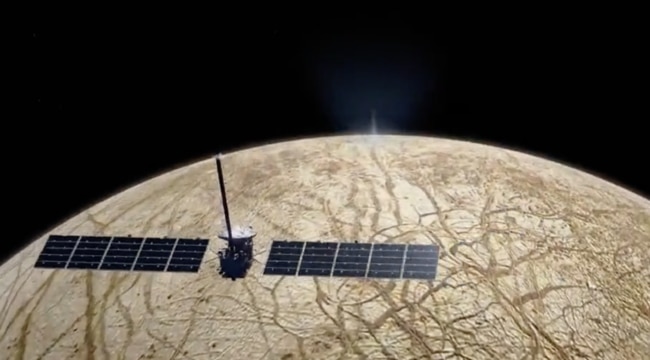
“We will learn what makes Europa tick, from its core and rocky interior to its ocean and ice shell to its very thin atmosphere and the surrounding space environment.”
The launch also came a day after SpaceX launched its fifth Starship test flight from Texas and returned the rocket’s booster to land for the first time.
The “super heavy booster” had blasted off attached to the uncrewed Starship rocket minutes earlier, then made a picture-perfect controlled return to the same pad in Texas, where a pair of huge mechanical “chopsticks” reached out from the launch tower to bring the slowly descending booster to a halt, according to a livestream from Elon Musk’s SpaceX company.
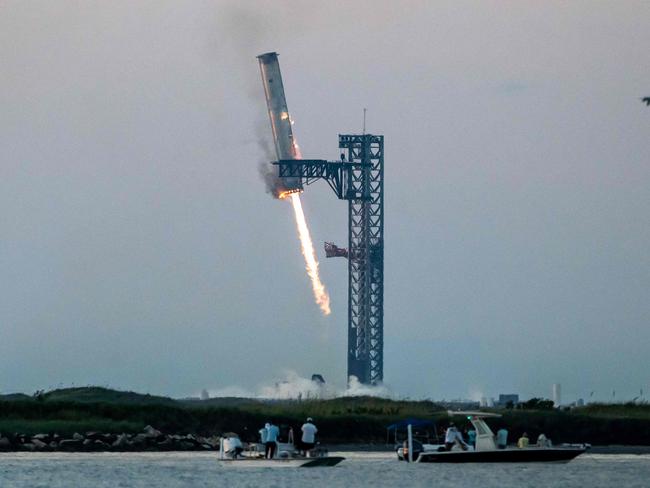
Not long afterward, the upper stage of Starship splashed down, as planned, in the Indian Ocean, a development saluted by Musk on X.
“Ship landed precisely on target!” he said of the vehicle’s fifth test flight. “Second of the two objectives achieved.” The successful “catching” of the booster at its Texas launch pad had company staffers erupting in cheers.
“Folks, this is a day for the engineering history books,” a SpaceX spokesperson said on the company’s livestream.
Liftoff occurred at 7.25 am (local time) in clear weather from the SpaceX facility in southern Texas.
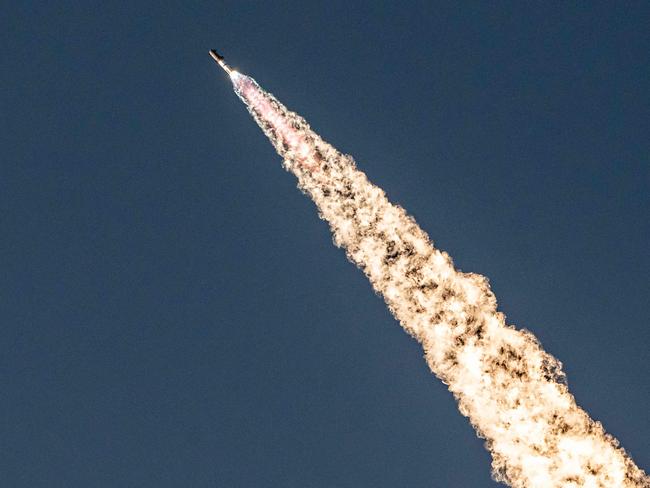
During its last flight in June, SpaceX achieved its first successful splashdown with Starship, a prototype spaceship that Musk hopes will one day carry humans to Mars.
US space agency NASA, which congratulated SpaceX on its successful test, is also keenly awaiting a modified version of Starship to act as a lander vehicle for crewed flights to the Moon under the Artemis program later this decade.
SpaceX said its engineers have “spent years preparing and months testing for the booster catch attempt, with technicians pouring tens of thousands of hours into building the infrastructure to maximise our chances for success.”
Teams were monitoring to ensure “thousands” of criteria were met both on the vehicle and at the tower before any attempt to return the booster.
Had the conditions not been satisfied, it would have been redirected for a splashdown in the Gulf of Mexico, as in previous tests.
Instead, having been given the green light, the returning booster decelerated from supersonic speeds and the powerful “chopstick arms” embraced it.
The large mechanical arms, called “Mechazilla” by Musk, have generated considerable excitement among space enthusiasts.
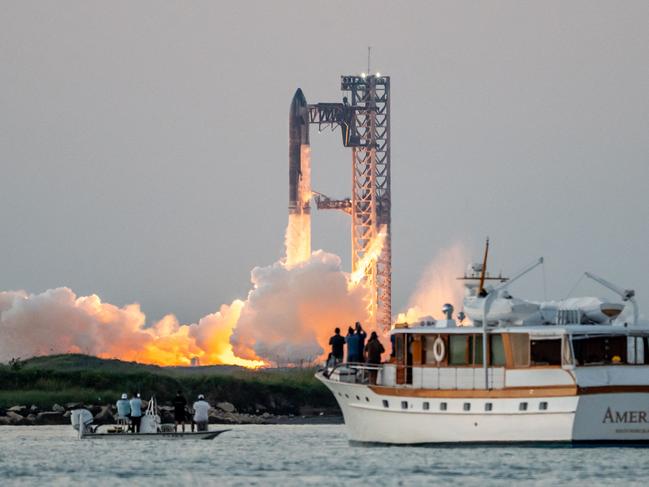
Video posted by SpaceX showed the booster slowly descending, its bottom wobbling slowly to and fro as some of its 33 powerful engines corrected its descent, until the arms closed gently around it and held the huge device in place above the ground.
SpaceX’s “fail fast, learn fast” strategy of rapid iterative testing, even when its rockets blow up spectacularly, has ultimately accelerated development and contributed to the company’s success.
Founded only in 2002, it quickly leapfrogged aerospace industry giants and is now the world leader in orbital launches, besides providing the only US spaceship currently certified to carry astronauts.
It has also created the world’s biggest internet satellite constellation — invaluable in disaster and war zones.

But its founding vision of making humanity a multiplanetary species is increasingly at risk of being overshadowed by Mr Musk’s embrace of Republican presidential candidate Donald Trump and his alignment with right-wing politics.
A clearly energised Musk, wearing an “Occupy Mars” T-shirt, appeared alongside Trump at a recent rally in Pennsylvania.
The company has been openly sparring with the Federal Aviation Administration over launch licensing and alleged violations, with Mr Musk accusing the agency of overreach and calling for its chief, Michael Whitaker, to resign.
“He’s trying to position himself for minimal regulatory interference with SpaceX once Donald Trump becomes president,” said Mark Hass, a marketing expert and professor at Arizona State University. “But it’s a calculated gamble if things go the other way.”
More Coverage
Originally published as Nasa’s Europa Clipper launches for Jupiter’s icy moon in search for life





